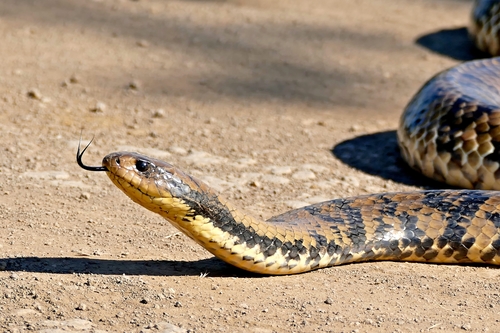
False Water Cobra
The false water cobra (Hydrodynastes gigas) enchants with its dramatic hood display, a clever mimicry of true cobras. This semi-aquatic snake thrives in South American wetlands, contributing to ecosystem balance by preying on fish and amphibians, while captivating observers with its intriguing defense strategies.
12-20 years
Lifespan
Length: 1.2192 - 3.048 m
Size
Medium
Aggression
Least Concern
Conservation Status
Stable
Population Trend
Characteristics
Hydrodynastes gigas, commonly known as the false water cobra, is a large, semi-aquatic snake native to South America. It thrives in wetlands and forests, exhibiting a unique neck-flaring behavior when threatened, mimicking true cobras. With a diet of fish and amphibians, it plays a vital role in controlling prey populations.
Distribution Range of the False Water Cobra
Hydrodynastes gigas, commonly known as the false water cobra, is native to South America. Its geographical distribution includes countries such as Brazil, Bolivia, Paraguay, and Argentina, primarily within the central and southern parts of these countries.
False Water Cobra's Habitat
Environmental Conditions
The false water cobra typically inhabits areas that are near bodies of water, such as rivers, streams, and marshes. It thrives in warm, humid environments, which are characteristic of tropical and subtropical regions. The species is often found in lowland forests, savannas, and wetlands where water is a prominent feature of the landscape.
Ecological Niche
Hydrodynastes gigas is a semi-aquatic predator that primarily feeds on amphibians, fish, and small mammals. Its ecological niche is closely tied to its ability to hunt both on land and in water, utilizing its speed and agility. The species has adapted to both terrestrial and aquatic habitats, enabling it to exploit a variety of prey and environments within its native range.
Copyright @ Nature Style Limited. All Rights Reserved.
 English
English